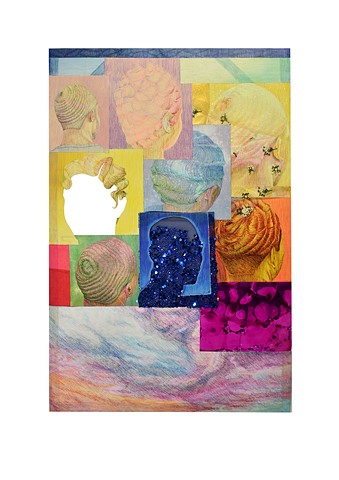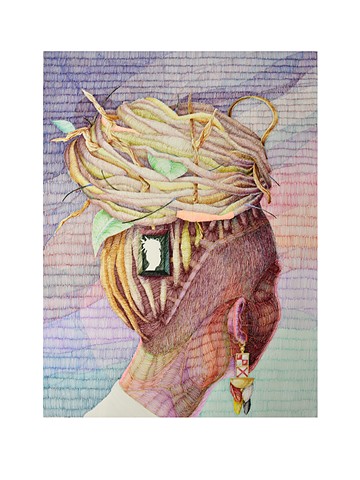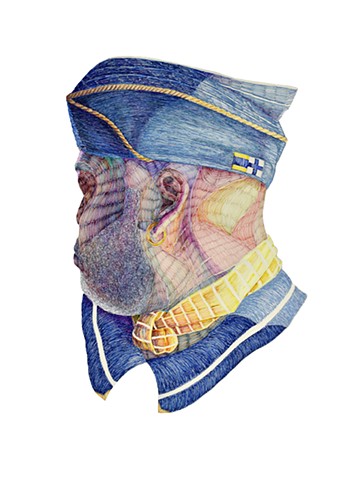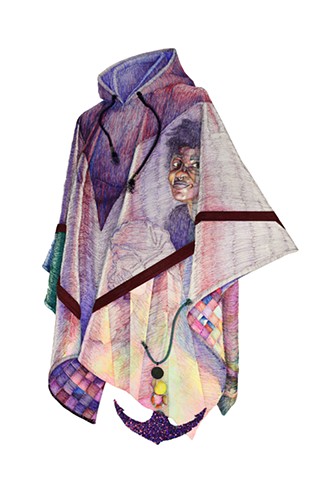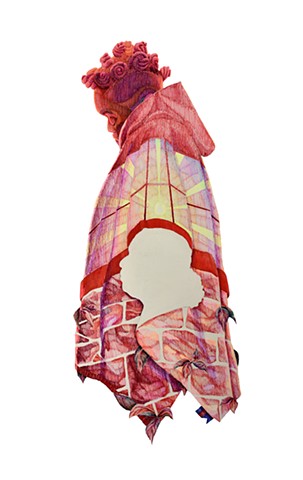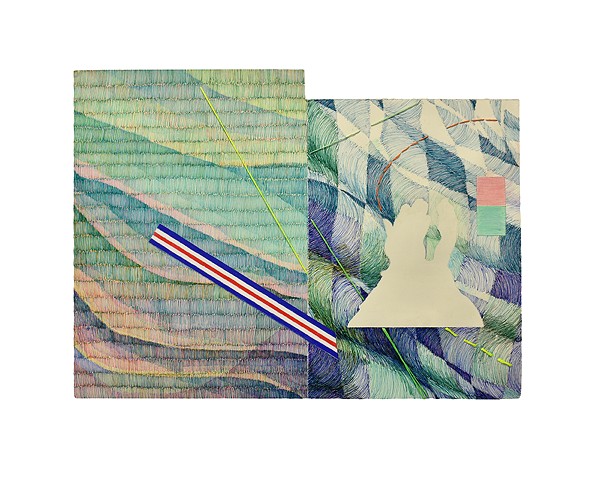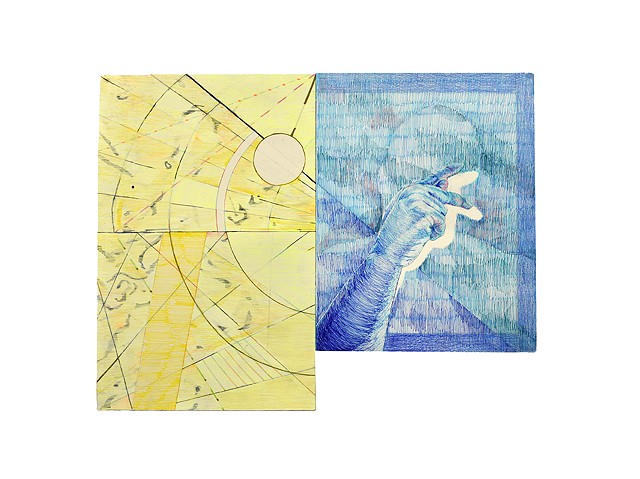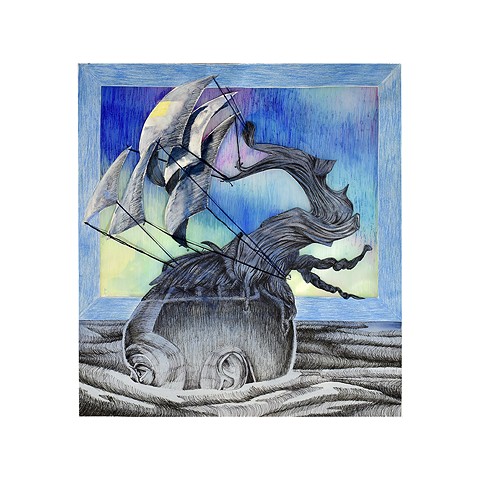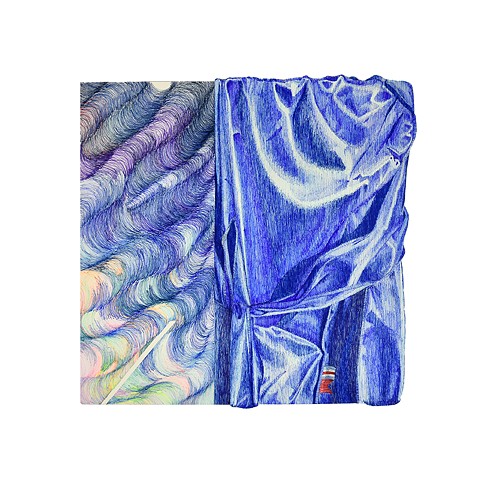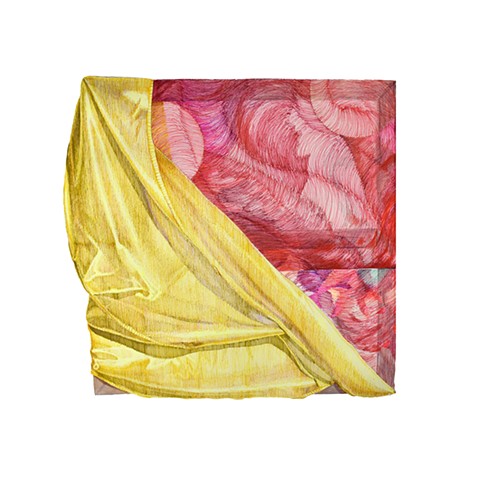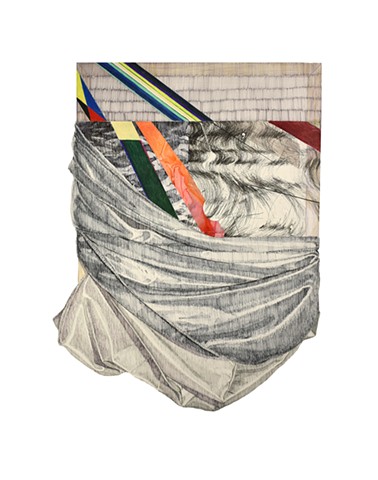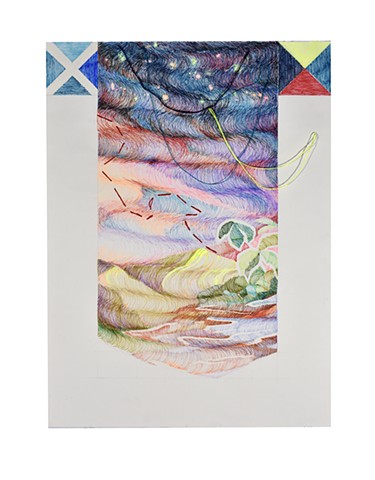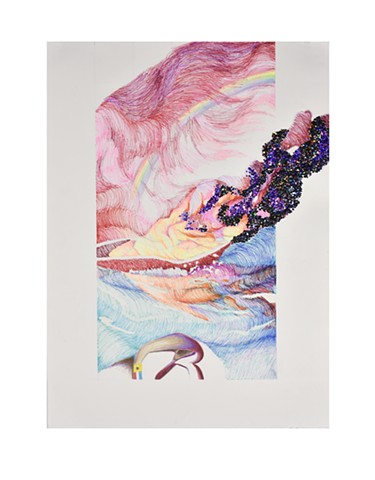Wave Patterns
Wave Patterns: New works by Michael A. Booker:
Wave Patterns features a new body of work by Maryland-based artist Michael A. Booker, exploring the relationship between the International Code of Signals (INTERCO) flags, water waves, and Black hairstyles as communication systems. The exhibition’s subtitle simultaneously refers to undulating lines central to Booker’s drawing style, the shape that strands of hair form in its natural state, energy transfers from point to point in a liquid and gaseous media, and movement to and from with a swaying motion. The artist uses an array of materials such as fineliner pens, colored pencils, sequins, fabric, watercolor, and alcohol ink. Each line and brushstroke symbolizes a unit of time and the artist’s interest in history, memory, and Black life.
INTERCO flags are a standardized system used in maritime communication to convey messages and information between ships and the shore, often related to navigation, safety, and emergencies. The flags and pennants, consisting of varying colors, shapes, and markings, have independent meanings; however, when hoisted or waved together, they can spell words and communicate complex messages. In works throughout the exhibition, such as “When I Get Home (Nest). UV9,” Booker conceals the facial expressions of his subject. The artist notes, “I want to also point to the ebb and flow of our emotions in relation to waves. The reason that I wanted to use hair as a communication system instead of facial expressions is that the person is hiding their emotions. But there are signs (hence the flags) that there is something deeper there that only a select few can recognize.” The artist does not provide a key for the flags and pennants; instead, he tasks viewers with locating, remembering, and deciphering them independently.
Like INTERCO flags, Black hairstyles function as a cipher, but of/for Black identity. For centuries, Black people of different cultures have used their braids, locs, twists, dreads, afros, curls, and other hairstyles as a form of expression. The varying hairstyles often communicate pride in one’s heritage and a connection to African and African American culture. In “Monolith. HM4,” Booker focuses on waves—a hairstyle for curly hair in which the curls are brushed and/or combed and flattened out, creating a ripple-like pattern. The hairstyles’ customizable pattern and style reflects personal preferences and cultural influences. Represented across age and gender and rendered in an array of colors, similar to the colorful sky in which it is situated, waves also represent the vastness of Black cultural expression.
Booker also depicts waves in their aqueous form. Waves—ridges or swells on the surface of a body of water—are a natural form of communication in nature, conveying information about environmental factors such as wind, temperature, and the presence of obstacles. Changes in wave behavior can indicate shifts in these environmental conditions. Here, Booker uses waves to reference memory, convey tranquility and power, and provoke awareness of the inherent unreliability and uncertainty in the world around us. Works like “Tempest/Nocturne. PS,” “Illusions of Oasis. MZ,” and “On Fire. IT” reference the transatlantic slave trade and the histories and experiences of Black people that are created, lost, and reimaged in and around water.
Wave Patterns reiterates how codes function inside and outside specific cultural contexts using flags, wave hairstyles, and water waves. In an era like ours, characterized and polarized by fast-paced transmission systems like social media, there is a great need to recognize other forms of communication. Amid this, Booker offers three seemingly opposite modalities to relay and receive information and engage with African American culture.
